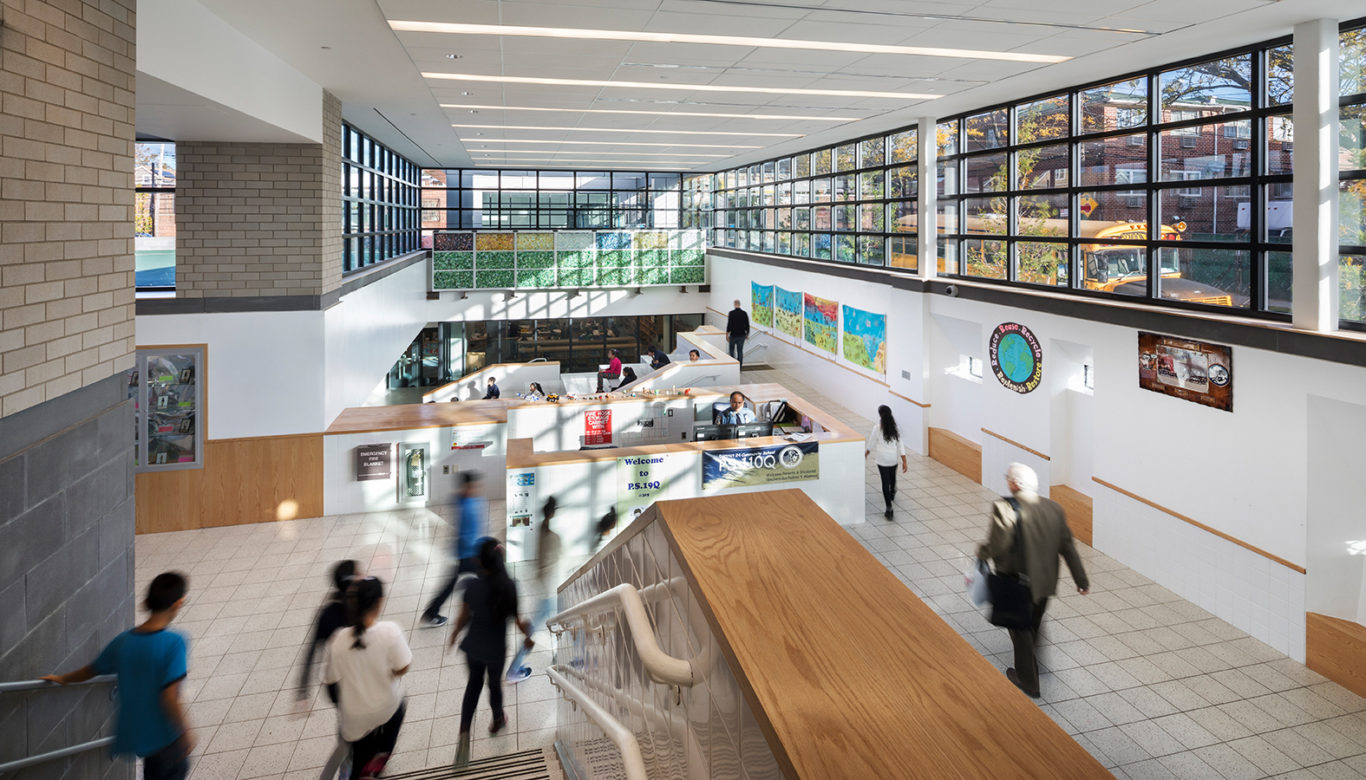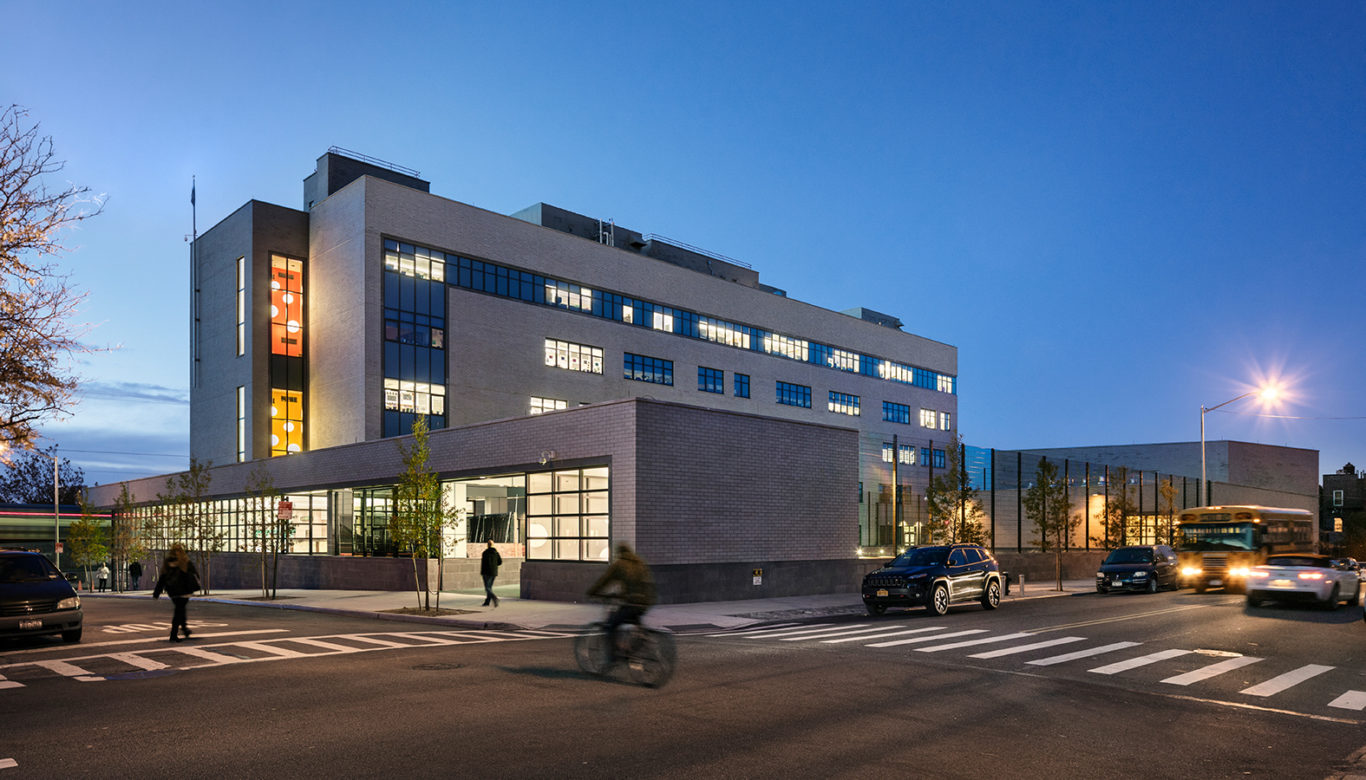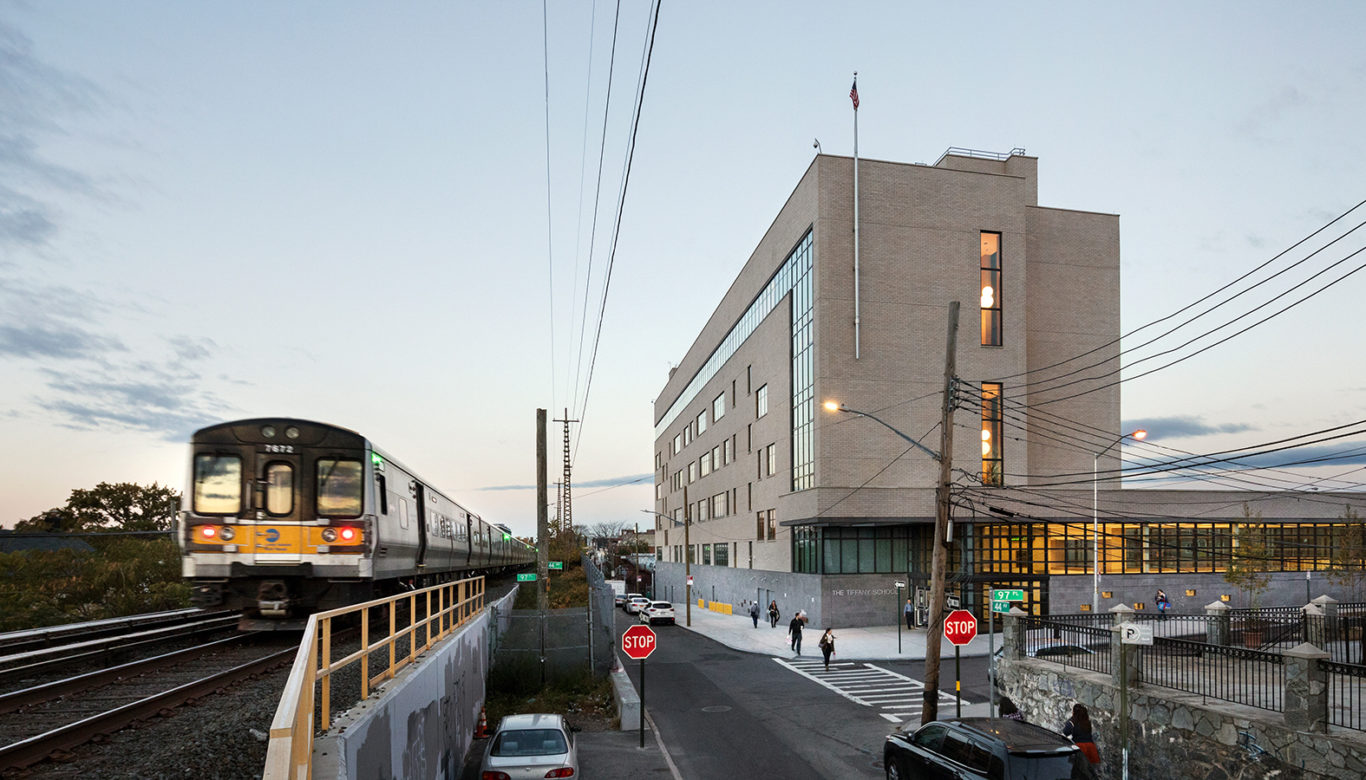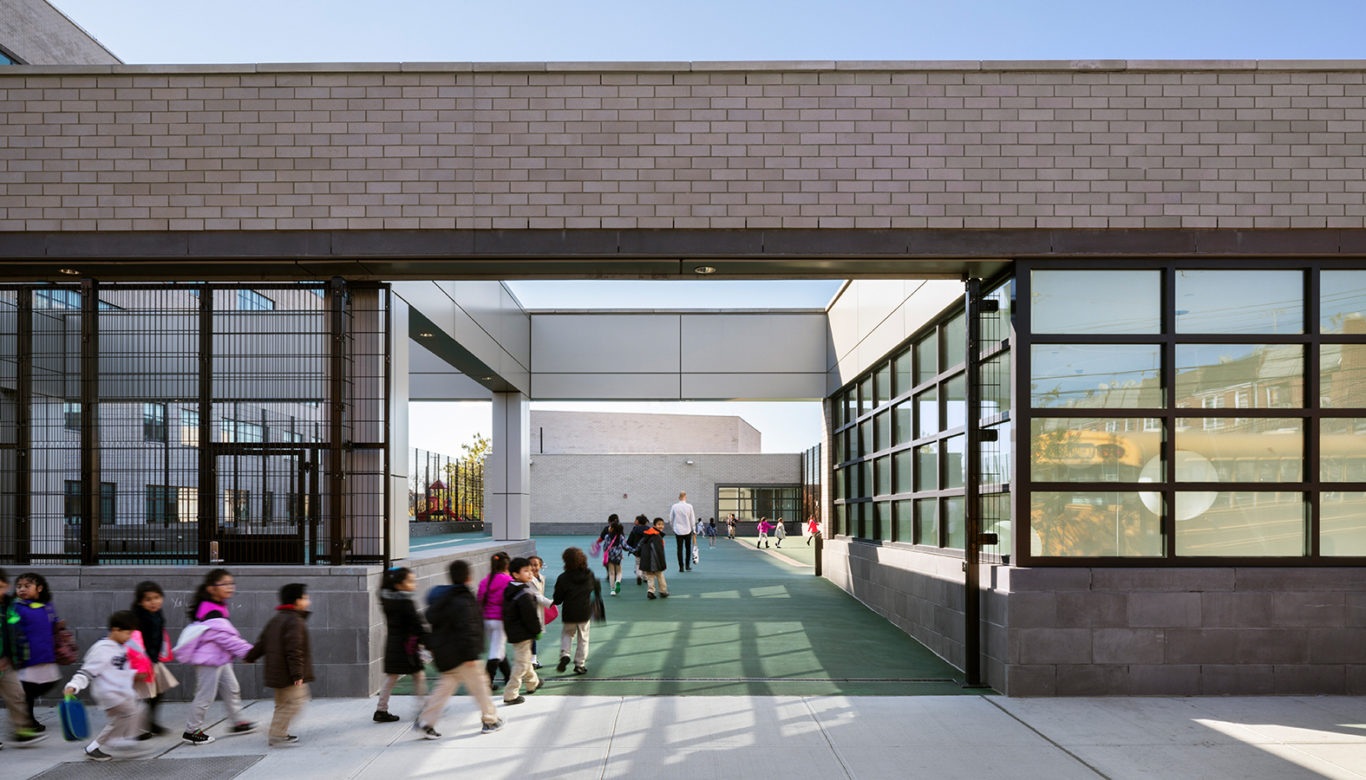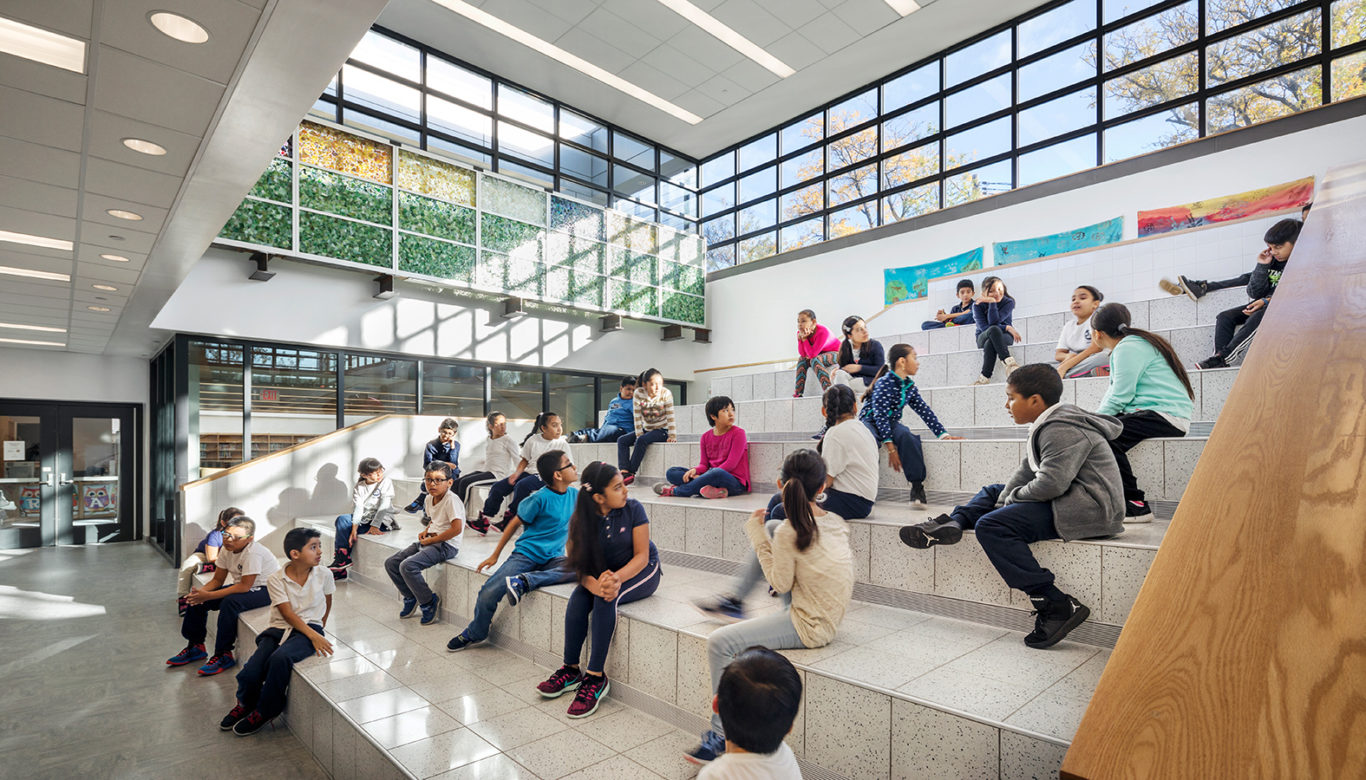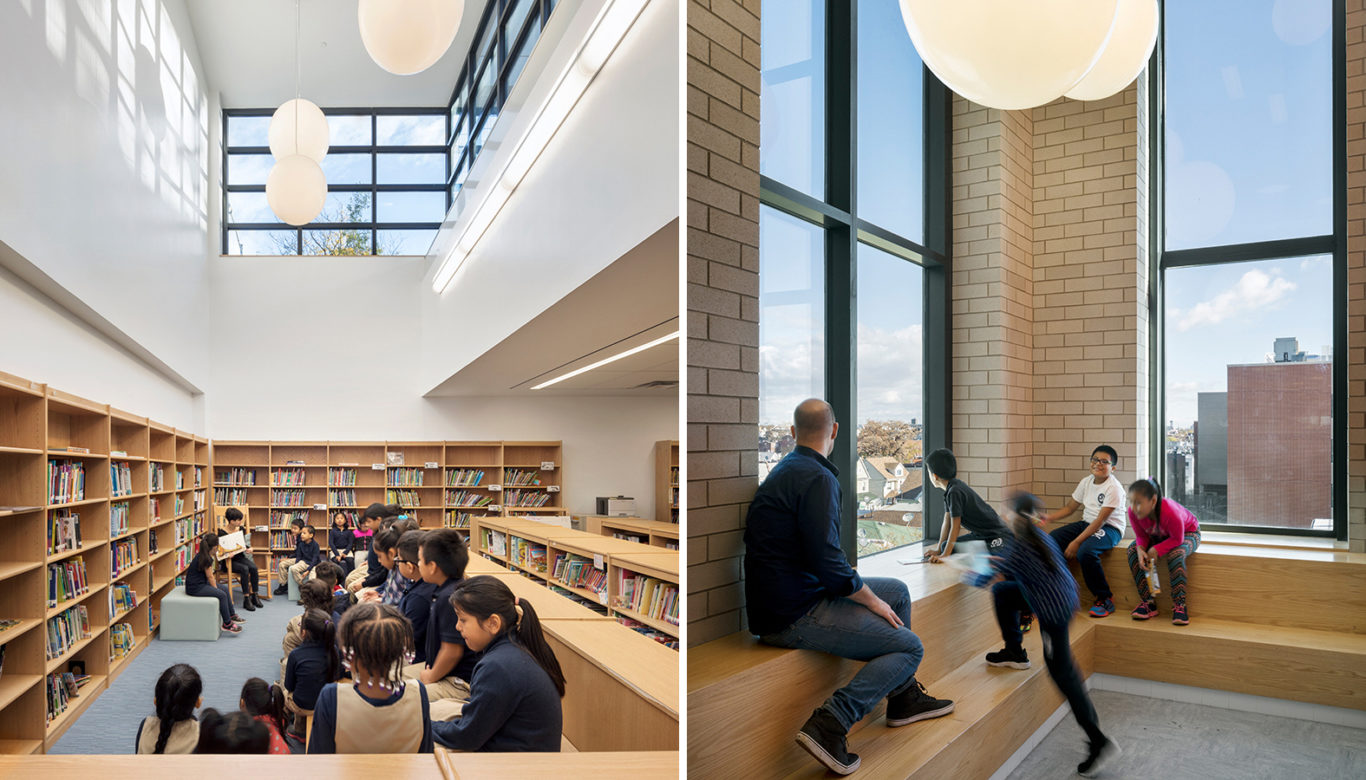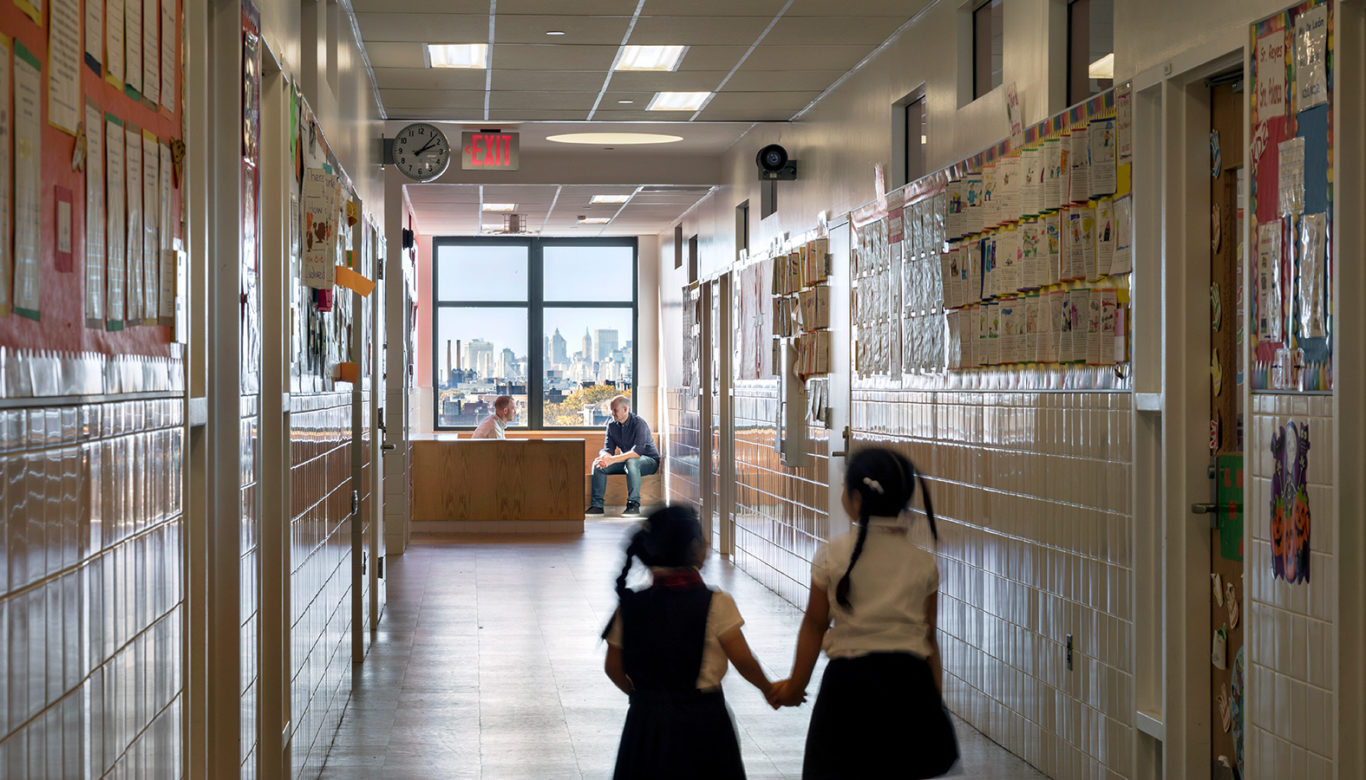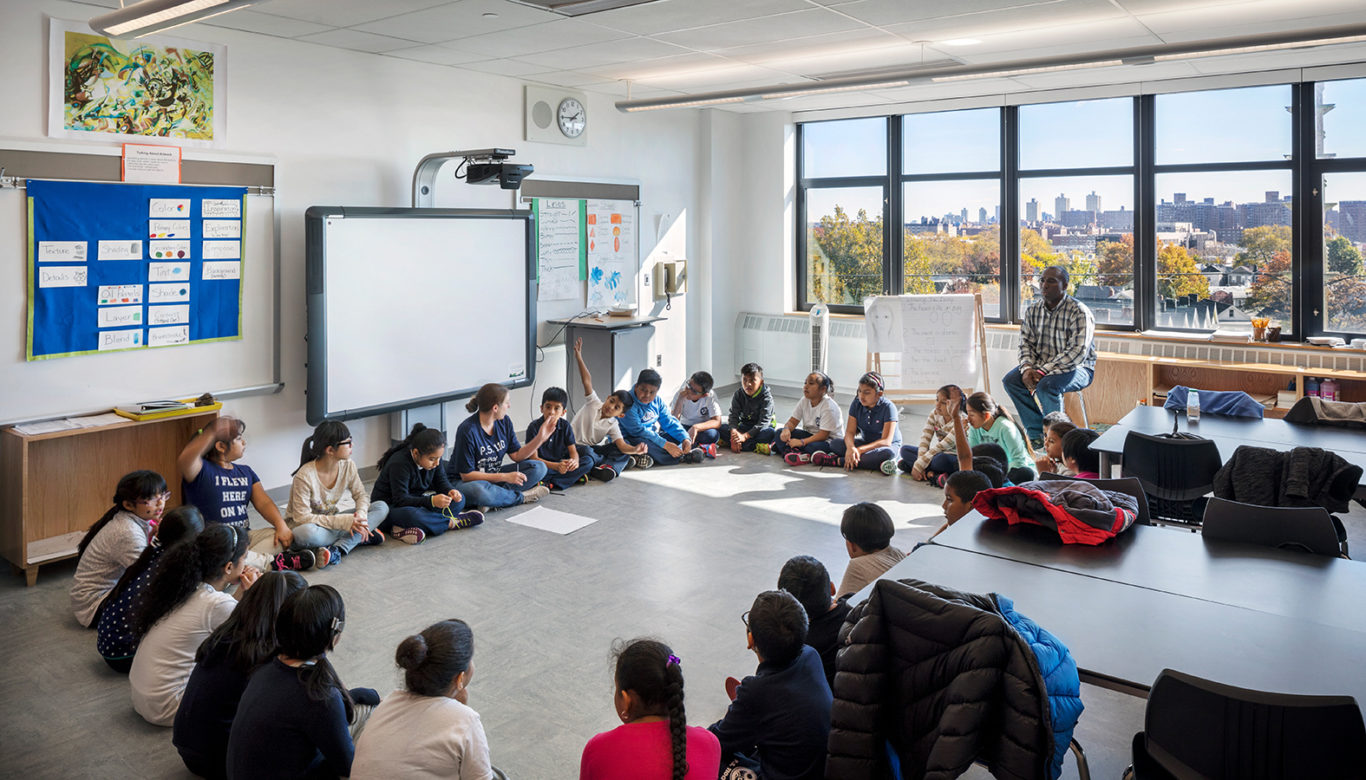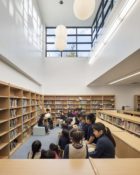Located in a low-rise residential and industrial neighborhood in Corona, Queens, this pre-kindergarten through fifth grade school conveys a welcoming presence within a densely populated community. The stepped building mass is composed of three interconnected pavilions surrounding a garden courtyard that serves as the heart of the 1,100-student school. A six-story volume containing classrooms is set back from the street, while an intermediary play yard between the courtyard and school building opens P.S. 315Q to the neighborhood.
The building’s massing and orientation respond to its proximity to a Long Island Railroad embankment on the south side. The play yard is located on the north side, away from the railroad, and a 13-foot setback on the south side creates physical and visual separation. Additionally, the use of laminated glass significantly reduces noise from passing trains. The design underscores SOM’s dedication to creating effective learning environments, while meeting the safety and functionality requirements of school facilities.?
Inside, various assembly spaces, including a gymnasium and a 300-seat gymatorium, can be accessed directly from the lobby. Because these spaces accommodate community activities in addition to school functions, they are separate from classroom areas. The facility also includes a cafeteria, library, instructional classrooms, science lab, art classroom, music classroom, and administrative offices.
In adherence with the New York City School Construction Authority’s (SCA) Green School Guidelines, sustainability is a foremost consideration in the school’s design, maintenance, and operation. Daylighting is a key energy-saving strategy: a clerestory system allows natural light to filter from the classroom windows deep into the building’s eight-foot-wide, double-loaded corridors. The terminus of each corridor is transformed from a dead-end space into a reading nook, with integrated seating that further expands the learning environment.
